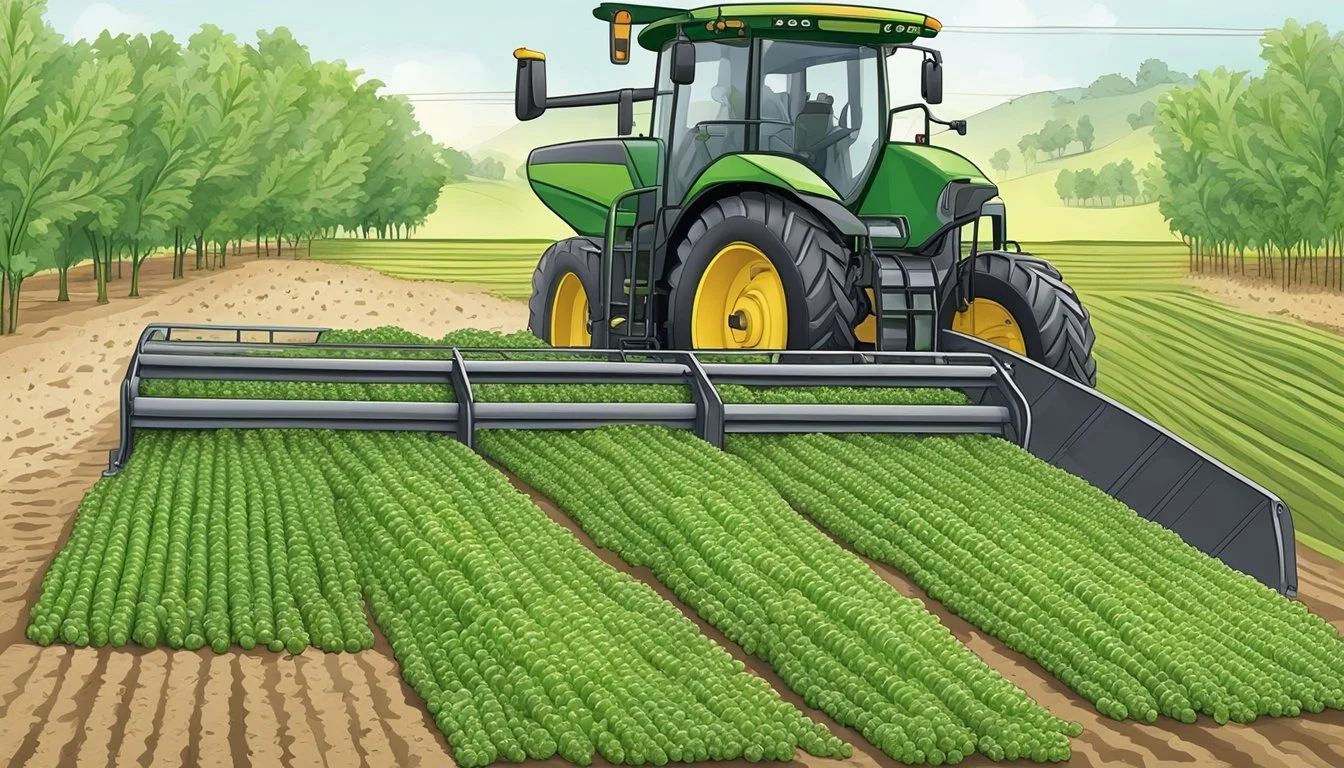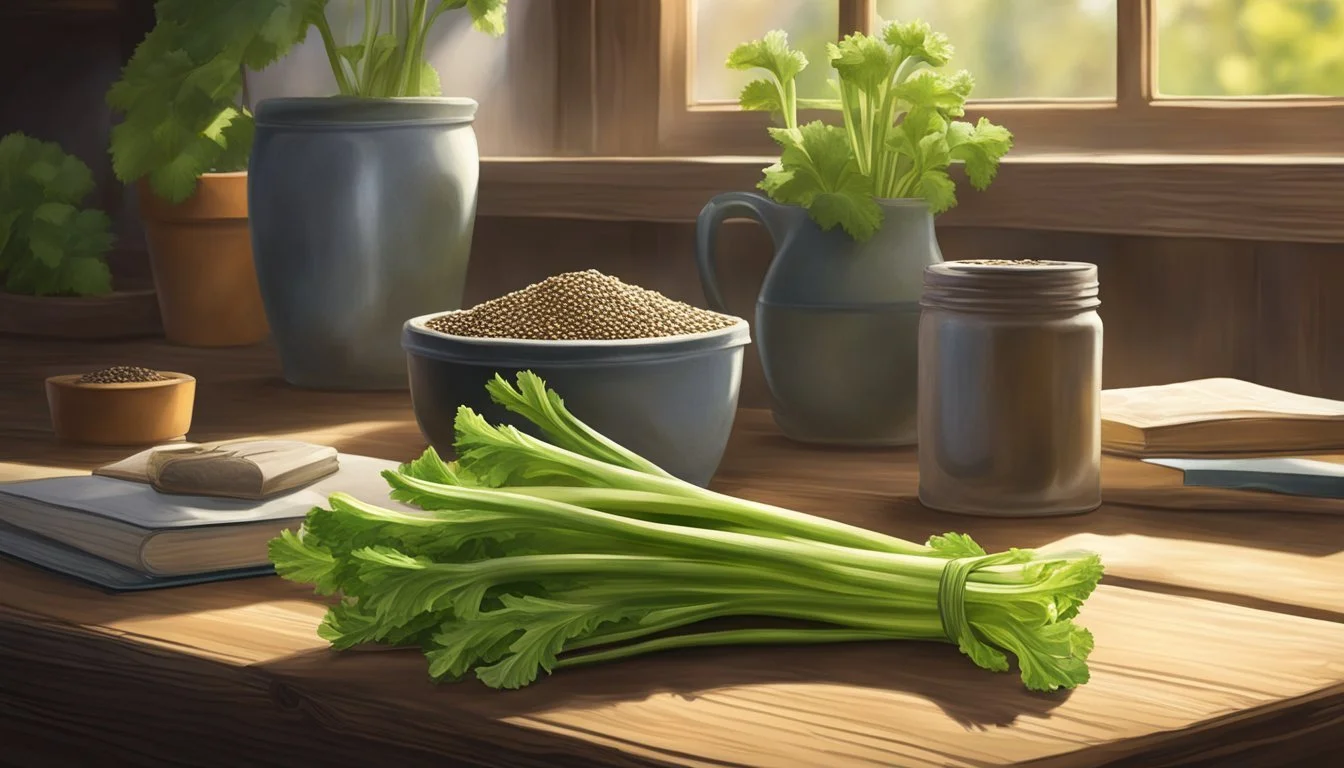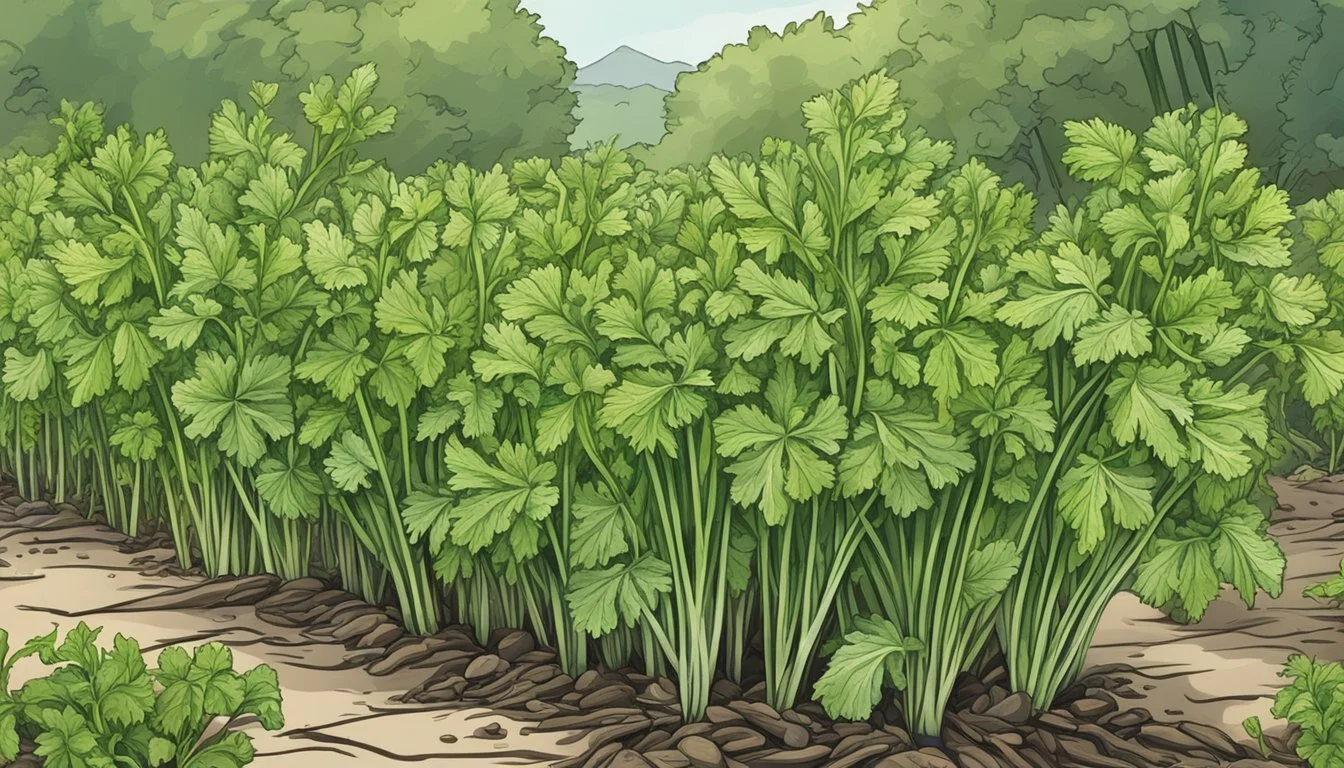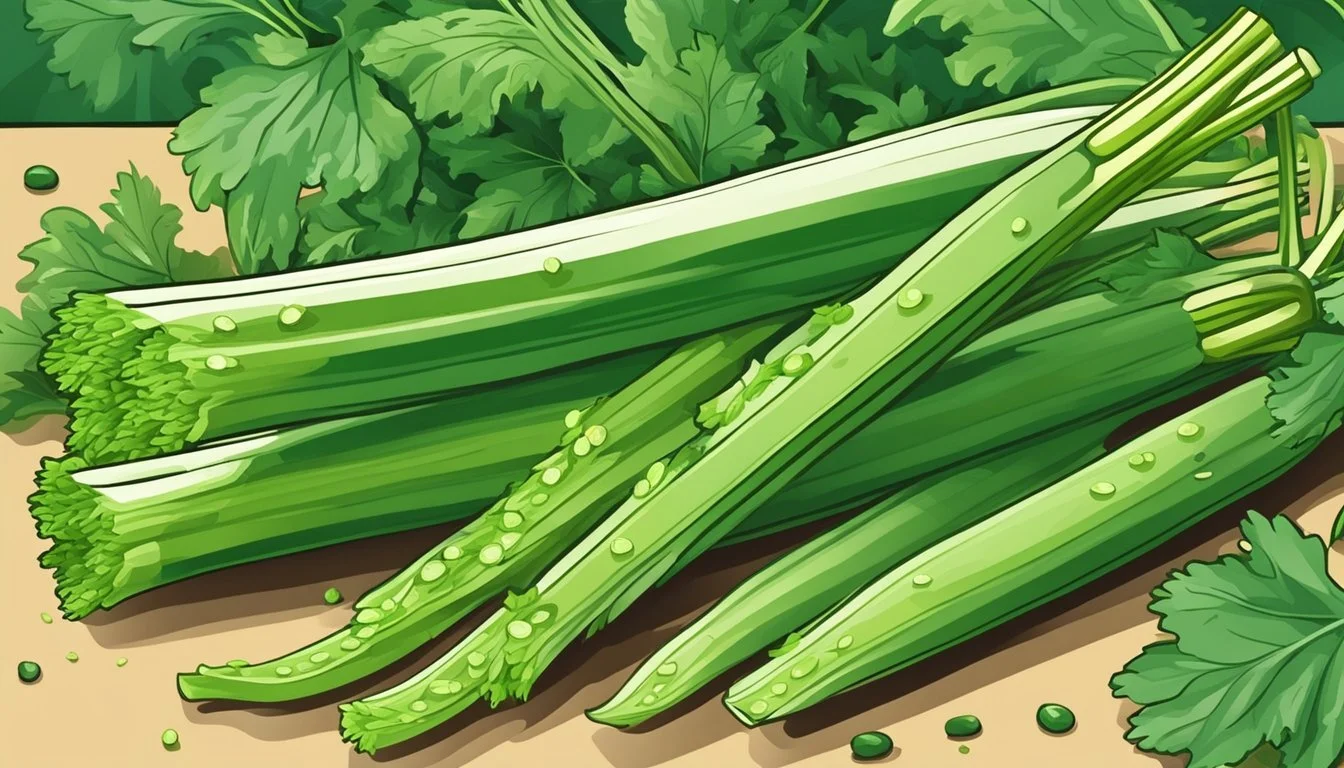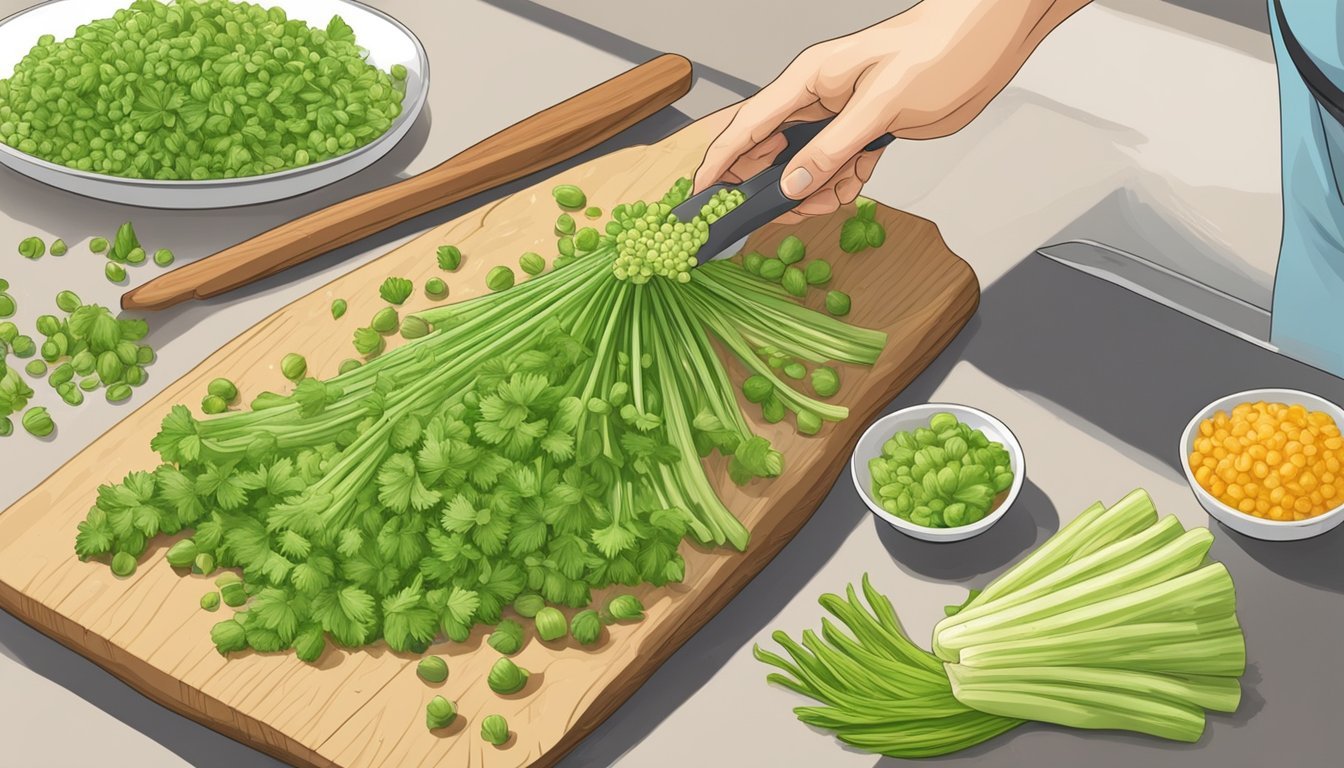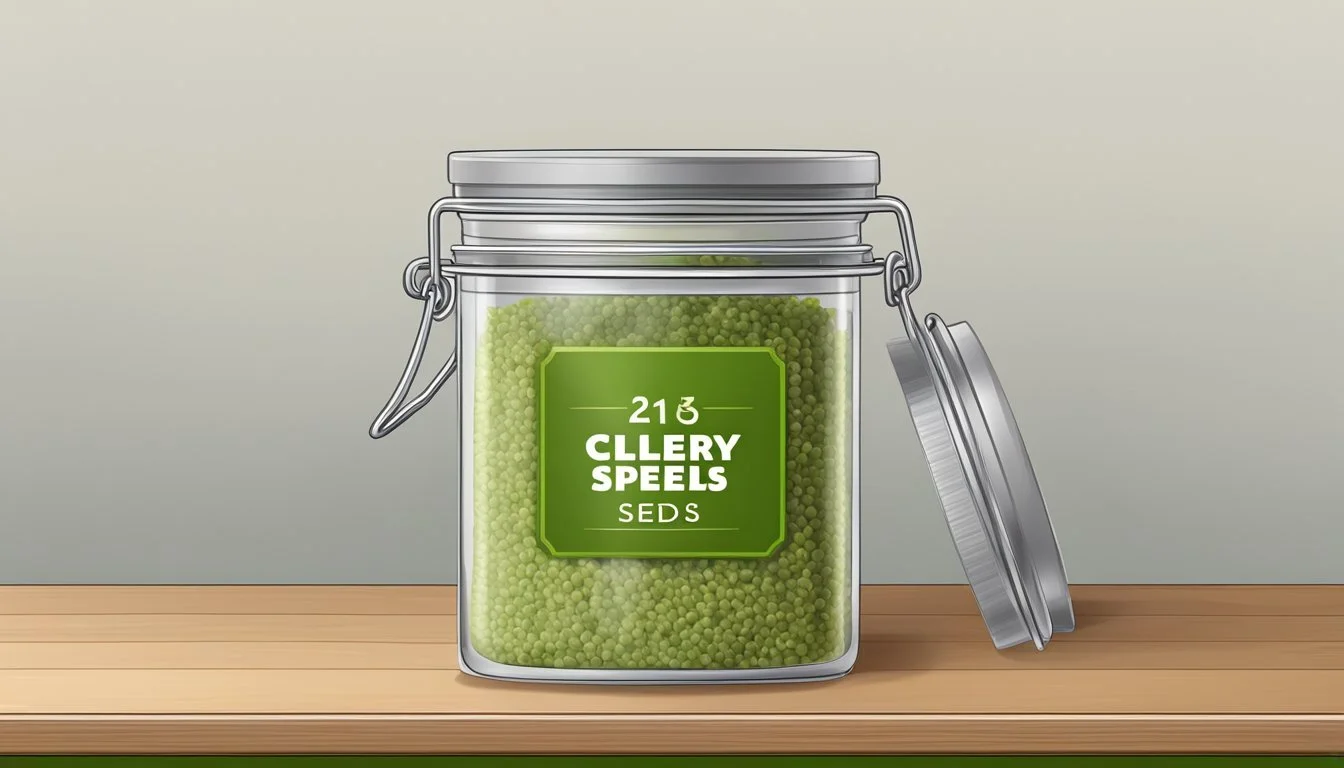How Long Do Celery Seeds Last?
Shelf Life and Storage Tips
Celery seeds (how long do celery seeds last?), known for their longevity in the spice cupboard, can maintain their best quality for about three to four years when stored properly at room temperature. Such resilience is attributed to their low moisture content and the presence of natural oils that preserve their flavor and potency. For optimal preservation, celery seeds should be stored in containers with tight-fitting lids, away from direct sunlight and moisture, which could otherwise compromise their longevity.
As a biennial plant, celery's lifecycle influences the harvesting of celery seeds (how long do seeds last?), with flowering occurring in the second year. Gardeners who harvest and save their own celery seeds can expect a freshness span that can extend up to five years. This extended shelf life means that celery seeds are a practical and cost-effective addition to one's spice collection.
When it comes to viability for planting, the longevity of celery seeds is a key factor for successful germination. Before sowing, a simple viability test involving moist paper towels and a warm environment can help ascertain if the seeds are capable of sprouting. This step ensures gardeners maximize their efforts in cultivating celery.
Overview of Celery Seeds
Celery seeds are a versatile ingredient in the culinary world and have a botanical profile that enables them to last quite long when stored properly. These seeds have distinctive flavor and thrive under cool conditions. Understanding the optimal storage conditions and the significance of proper storage is key to maintaining their quality over time.
Culinary Usage of Celery Seeds
Celery seeds are often ground or used whole to impart a bold, warm flavor to various dishes. These tiny seeds add pungency to spice mixes, dressings, and marinades. In the culinary context, they are celebrated for their ability to enhance flavors, especially in salads, soups, and pickling recipes.
Botanical Profile of Celery
Botanically, celery, classified as Apium graveolens, is a biennial plant. These small, brown seeds are harvested from the plant once it flowers in its second year. The seeds of celery carry the concentrated flavor of the stalks, making them a potent spice.
Optimal Conditions for Celery Seed Storage
To preserve the cool, earthy flavor of celery seeds, they must be stored in cool and dry conditions away from direct sunlight. Ideally, in-airtight containers with tight-fitting lids to prevent moisture and light from affecting the quality. These conditions will help maintain their flavor and potency for longer.
Significance of Proper Seed Storage
Proper storage of celery seeds is crucial as it directly impacts their flavor and longevity. Stored optimally, celery seeds can last for 3 to 5 years, retaining much of their aromatic quality. This longevity is valuable for both home cooks and professional kitchens, ensuring a ready supply of this flavorful spice.
Ideal Storage Techniques
Proper storage is crucial for maintaining the quality and extending the longevity of celery seeds. By utilizing the right techniques in temperature control, moisture management, and container selection, one can ensure celery seeds stay potent and fresh for up to 3-4 years.
Temperature Control
Room Temperature: A consistent, cool room temperature between 60-70°F (15-21°C) is essential in preserving the freshness of celery seeds. Temperature Fluctuations: Seed quality may degrade with constant changes in heat levels, so it's important to store them in a location with minimal temperature variations.
Moisture Management
Celery seeds require a dry environment to prevent spoilage and maintain flavor. Excess moisture can lead to mold growth and a decrease in seed quality. Using desiccants or ensuring that the storage area is low in humidity can aid in keeping seeds dry.
Container Selection for Seed Storage
Airtight Containers: Celery seeds should be stored in containers with tight-fitting lids to shield them from moisture and preserve their aromatic oils. Opaque Containers: Light exposure can harm the seeds, so storing them in opaque containers helps in protecting them from light damage.
Shelf Life of Celery Seeds
Celery seeds, when stored correctly, can remain viable for culinary or planting use for several years. The longevity is influenced by storage conditions and can be assessed through germination tests.
Factors Affecting Seed Viability
Storage Conditions:
Temperature: Cool and dry places are ideal.
Light Exposure: Celery seeds should be kept away from direct sunlight.
Moisture: Seeds need to be stored in an environment with low humidity.
Air Circulation: Airtight containers are recommended to prevent oxidation and moisture ingress.
Packaging: Proper packaging can prevent contamination and preserve quality.
Seed's Age:
New Seeds: Typically have higher germination rates.
Older Seeds: Potency and flavor diminishes over time, especially after the three to four-year mark.
Testing Seed Germination Rates
Method:
Prepare a Test Environment: Use a damp paper towel or soil in a tray.
Sow Seeds: Place a consistent number of seeds.
Observe: Monitor for sprouts over a set time period, usually one to two weeks.
Calculate Viability: The percentage of seeds that germinate versus the total tested provides the viability rate.
Timing:
It's generally advised to conduct germination tests annually for seeds meant for cultivation to ensure quality.
By following these guidelines, one can accurately assess the shelf life of celery seeds and maintain their viability for both culinary and planting purposes.
Pre-Planting Preparation
Proper preparation for celery seeds involves timing the planting and ensuring soil conditions are optimal to support growth. These steps are crucial for the success of indoor cultivation of celery.
When to Start Celery Seeds Indoors
For gardeners aiming to grow celery, starting seeds indoors is a time-sensitive task. It is generally recommended to plant celery seeds indoors 10 to 12 weeks before the last expected frost date. This lead time allows celery seedlings to establish a robust root system and achieve a suitable size for transplanting outdoors when conditions permit.
Timeline for Indoor Planting:
Determine the date of the last expected spring frost.
Count back 10 to 12 weeks from this date to start seeds indoors.
Soil and Compost Requirements
Celery seeds require a nurturing soil environment to germinate successfully. The ideal soil mix for starting celery seeds indoors should be well-draining and fertile, enhanced with rich compost to provide the necessary nutrients. Soil temperature plays a vital role in germination, with an optimum range of 65 degrees Fahrenheit being favorable.
Soil and Compost Mix:
Use a pre-moistened seed starting mix as the base.
Incorporate compost to increase nutrient content.
Ensure the soil is firmly pressed around the seeds after planting to secure them.
With attention to timing and soil preparation, one can set the stage for a successful growing season, paving the way for a bountiful celery harvest.
Growing Celery From Seeds
Growing celery from seeds is a meticulous process that demands patience and attention to detail. It involves a germination period of about 2-3 weeks, after which the seedlings need proper care to ensure successful transplantation and hardening off before they can thrive in a garden setting.
Transplanting and Hardening Off Celery Seedlings
Once celery seedlings have emerged and grown to a suitable size, typically with at least one set of true leaves, they can be prepared for transplanting. Transplanting should occur after the last frost date to prevent cold damage. Seedlings require a gradual hardening off process, which involves slowly exposing them to outdoor conditions over the course of 7-10 days. This process toughens up the plant cells and reduces transplant shock.
Begin hardening off about a week before the intended transplant date.
Initially, place the celery seedlings outdoors in a sheltered area for a few hours, avoiding direct sunlight and harsh weather.
Gradually increase the duration of outdoor exposure, including some direct sunlight, each day.
Ensure seedlings remain well-watered during this period to avoid drought stress.
Care and Maintenance for Celery Plants
Once celery plants are hardened off, they can be transplanted into their final growing locations. It's important to maintain consistent soil moisture as celery thrives in well-drained, moist soil. Adequate spacing is also crucial for healthy growth; plants should be spaced about 10 to 12 inches apart to ensure adequate airflow and sunlight penetration.
Soil requirements: Rich in organic matter, well-draining, with a pH between 6.0 and 7.0.
Watering: Keep the soil consistently moist but not waterlogged.
Fertilizing: Apply a balanced fertilizer every few weeks to support growth.
Mulching: Helps retain soil moisture and regulate temperature. Use organic mulch around the base of the plants.
Celery has a long growing season and may take up to 140 days to harvest from transplanting. It's best grown in cooler conditions, with warm days and cooler nights fostering optimal growth. Remember, celery prefers long, mild growing seasons and may require additional care, such as blanching, if grown for its paler stalks.
Harvesting and Post-Harvest Storage
Proper techniques in harvesting celery seeds and their subsequent storage are critical for maintaining their viability and flavor. The longevity of celery seeds largely depends on these post-harvest practices.
How and When to Harvest Celery
Celery is biennial, meaning harvesting of seeds should not be expected until the second year of growth when the plant flowers. Seed harvest should commence once the flowers have dried out and transformed into brown coloration. This typically happens in late summer. Harvesting celery seeds involves carefully cutting the seed heads and placing them into a paper bag. This process allows for the seeds to dry without the risk of mold or pests.
Extending Celery Shelf Life After Harvest
Once harvested, storage plays a vital role in the longevity of celery seeds. To extend the shelf life of these seeds, they should be kept in a cool, dry place. Preferably, they should be stored in an airtight container away from light. A common and suitable storage location is the refrigerator, where seeds can be kept for up to five years, provided the conditions are consistently cool and the humidity is low. This environment prevents the seeds from absorbing moisture and becoming susceptible to spoilage.
Cultivation Tips for Home Gardeners
To ensure a bountiful celery harvest, home gardeners must consider the specific requirements of the growing season and address the critical aspects of soil nutrients. Detailed planning and proper techniques can greatly influence the success of a celery crop.
Common Mistakes in Growing Celery
Growing celery requires attention to timing and conditions to avoid common pitfalls. Some critical mistakes include:
Ignoring the Growing Season: Celery has a long growing season, requiring up to 140 days to mature. Starting the seeds indoors early in spring or late summer is essential to match the plant's need for cooler conditions.
Improper Spacing: Plants need adequate space for growth. Seedlings should be 6 inches to 10 inches apart in trenches that are 4 inches to 6 inches deep to ensure proper development.
Neglecting Water Requirements: Celery is a moisture-loving plant, so consistent and ample watering is necessary to avoid stringy, underdeveloped stalks.
Improving Soil Nutrient Content for Better Yield
Celery thrives in nutrient-rich soil, so enhancing soil fertility is crucial. Methods to improve nutrient content include:
Addition of Organic Matter: Incorporate well-composted manure or organic compost to increase the soil's nutrient profile.
Regular Feeding: A balanced fertilizer can provide additional nutrients throughout the growth period.
Soil Testing: Monitor soil conditions and adjust fertilization accordingly to meet the specific needs of celery, which prefers a nutrient-dense environment for its delicate umbel formation.
Companion Planting and Crop Rotation
In the cultivation of celery seeds, strategic companion planting and crop rotation are vital for enhancing growth and protecting against pests and diseases. These practices ensure a more productive celery crop.
Compatible Vegetables and Herbs
When cultivating celery, gardeners can improve its growth and health by planting it alongside compatible herbs and vegetables. Notable combinations include:
Lettuce and Spinach: These leafy greens share similar watering requirements with celery and can be space-efficient companions.
Tomatoes: They can offer shade for celery, which prefers a mix of sun and shade.
Beans and Peas: These legumes enrich the soil with nitrogen which benefits celery.
Herbs are also excellent allies:
Onion and Garlic: These alliums deter pests, such as carrot rust flies.
Sage, Rosemary, and Basil: These herbs can repel insects and enhance the growing environment for celery.
One should avoid planting celery with allelopathic vegetables like fennel, which can inhibit its growth through chemical excretions.
Planning Crop Succession with Celery
Rotating crops is essential for maintaining soil health and preventing disease cycles. A well-planned crop rotation might follow this pattern:
Year 1: Celery is planted in a bed previously occupied by heavy feeders like tomatoes or peppers, which have left the soil nutrient-depleted. Celery's lighter feeding requirements make it a suitable successor.
Year 2: As celery can enrich the soil by loosening it, root vegetables such as carrots or celeriac could follow since they benefit from the softer earth.
Year 3: Squash or other heavy-feeding plants might then take advantage of the improved soil structure and residual nutrients.
By rotating crops in this manner, gardeners prevent the buildup of soil pathogens and optimally utilize the nutrients obtained and modified by celery and its companions.
Dealing with Plant Diseases and Pests
When growing celery, it's crucial for gardeners to address plant diseases and pests effectively to ensure healthy crop production. Vigilance and strategic preventive measures are key to mitigating these issues.
Preventative Measures for Celery Plants
Regular Monitoring: A consistent schedule for checking celery plants can detect early signs of mold, pests, or disease. Immediate identification and action can prevent the spread and minimize damage.
Hygiene Practices:
Remove and destroy infected plant material to prevent the spread of spores.
Sterilize garden tools regularly to avoid cross-contamination.
Cultural Controls:
Crop Rotation: Alter planting locations yearly to disrupt disease and pest lifecycles.
Proper Spacing: Ensuring adequate space between plants promotes air circulation, reducing mold and mildew risks.
Physical Barriers:
Use row covers to protect celery from insect pests.
Employ insect netting to prevent infestations.
Biological Control:
Introduce beneficial insects like ladybugs or lacewings to manage aphid populations.
Apply Bacillus thuringiensis (Bt) as a biological pesticide for caterpillars.
Chemical Treatments: Use them as a last resort:
Select insecticidal soaps for a milder approach against pests.
Employ specific fungicides for fungal diseases, following manufacturer instructions to avoid resistance.
Implementing these strategies can significantly diminish the occurrence of diseases and pests, safeguarding celery crops throughout their growth cycle.
Celery Varieties and Their Characteristics
Celery, scientifically known as Apium graveolens, displays a variety of characteristics that can influence a gardener's choice depending on their local climate conditions. Each type exhibits distinct growth patterns, taste profiles, and climate preferences.
Choosing the Right Type of Celery for Your Climate
Climate plays a pivotal role in selecting the suitable celery variety for your garden. Gardeners should consider the length of their growing season and the average temperatures they experience throughout the year. Celery generally prefers a long, cool growing season and thrives in temperatures between 60°F and 70°F. High temperatures can impede growth, leading to bolting or stringy stalks.
Cool Weather Varieties:
Utah: Known for its crunchy stalks and hearty flavor, the Utah variety is well-suited for cooler climates and can tolerate short periods of frost. It requires up to 140 days to reach maturity, which makes it ideal for an early spring planting in such regions.
To ensure the success of your celery crop, it's essential to consider the variety that aligns best with your local weather conditions, as well as the specific growing requirements of the celery type chosen.
Health Benefits of Celery
Celery, a vegetable widely recognized for its crisp stalks and refreshing flavor, is also heralded for its health-promoting benefits. It's an excellent source of essential nutrients, and its medicinal properties have been valued since ancient times.
Nutritional Components and Medicinal Properties
Celery is notable for its vitamin and mineral content, offering a rich array of nutrients that include:
Vitamins: A, K, and C
Minerals: Calcium, manganese, and potassium
In terms of medicinal properties, celery's health benefits are substantial. It contains compounds like phthalides which may help to support cardiovascular health by reducing blood pressure levels. This effect is thought to be due to the phthalides' ability to lower stress hormone levels and aid in the dilation of blood vessels.
Moreover, celery seeds contain a compound known as 3-n-butylphthalide (BuPh), which may contribute to lowering lipid levels in the blood, thereby potentially reducing high cholesterol. This aspect of celery's medicinal properties could protect heart health and prevent related diseases.
Celery's nutrient profile and health benefits make it more than just a flavorful addition to dishes; it's a vegetable with legitimate medicinal properties.
Cooking with Celery and Celery Seeds
Celery and celery seed offer distinctive flavors to a variety of dishes. While celery provides a crunchy texture and fresh taste, celery seed adds a concentrated burst of flavor without altering a dish's texture.
Incorporating Celery in Savory Dishes
Celery is a common ingredient that imparts a slightly bitter, fresh taste and crisp texture to savory dishes. It is a staple in mirepoix, a flavor base made from diced celery, onions, and carrots used in many soups and stews. Soups particularly benefit from celery's flavor, as do braised meats (What wine goes well with braised meats?) and side dishes. To maintain its textural integrity, celery is often added during the latter stages of cooking.
Using Celery Seeds in Seasoning Blends
Celery seeds are small but packed with intense flavor, making them ideal for seasoning blends and brines. They possess a more pronounced taste than fresh celery and are often found in spice mixes for barbecue rubs and vegetable juices like Bloody Marys. In a ground form, celery seeds can be sprinkled directly into dishes, sparingly, as their flavor is potent. They're commonly used to enhance salad dressings and marinades.
Advanced Techniques in Celery Cultivation
Celery cultivation has evolved to incorporate various advanced techniques for maximizing yield and quality. An understanding of these methods allows gardeners to refine their approach to celery growth.
Hydroponic Systems for Growing Celery
Hydroponic systems provide a controlled environment for growing celery, and they are especially beneficial for this crop considering its requirement for consistent moisture and nutrients. Hydroponic cultivation involves growing plants in a water-based solution, rich with essential minerals, instead of soil. This system allows for precise control over the growing conditions, including watering, and ensures that plants have access to a full spectrum of nutrients necessary for their growth.
Advantages:
Constant Nutrient Supply: Plants receive an uninterrupted flow of nutrients, leading to robust growth.
Water Efficiency: Hydroponics use considerably less water than traditional soil cultivation, as water in the system is recirculated and reused.
Requirements:
Light: Celery requires full sun or equivalent artificial lighting. In hydroponics, this often means LED or fluorescent grow lights to mimic sunlight.
Temperature and Humidity Control: Maintaining a cool and stable environment simulates the ideal outdoor growing conditions for celery.
Nutrient Solution Maintenance: Regular checks and balancing of pH and nutrient concentrations are essential.
By employing hydroponic systems, growers can potentially achieve higher yields in shorter times compared to traditional outdoor cultivation. This system's efficacy in managing water and nutrients directly supports the health and productivity of the celery plants.
Long-Term Seed Bank Strategies
In maintaining seed viability over extended periods, the way seeds are preserved and the creation of a private seed repository are critical factors.
Preservation Methods for Seed Longevity
Methods to Ensure Seed Viability:
Dry Storage: Maintaining a low humidity environment is vital for seed preservation, as moisture can initiate germination or cause mold.
Temperature Control: Storing seeds in a cool, consistent temperature helps prevent both decay and premature germination.
Airtight Containers: Using airtight containers, such as glass jars with rubber seals, can minimize the effects of humidity and temperature variations.
Example of Preservation Method in Action: Celery seeds can be particularly challenging to store due to their small size and specific requirements. However, when stored correctly, celery seeds can remain viable for up to five years, ensuring that they germinate when planted.
Creating a Home Seed Library
Step-by-Step to Set up a Seed Library:
Collecting Seeds: Carefully harvest seeds from mature plants, ensuring that they are dry before storage.
Labeling: Clearly label each container with the seed type, date of harvest, and any specific storage instructions.
Organization: Organize seeds by species or plant family, and consider sorting them by the year to track viability.
In creating a home seed library, gardeners can select cultivars that are well-suited for their local climate, mimicking strategies employed by more formal seed banks that cater to specific regional needs. For example, a home gardener in a cooler climate could selectively store hardy varieties that are known to thrive in those conditions, effectively ensuring a customized seed reserve for future planting seasons.




